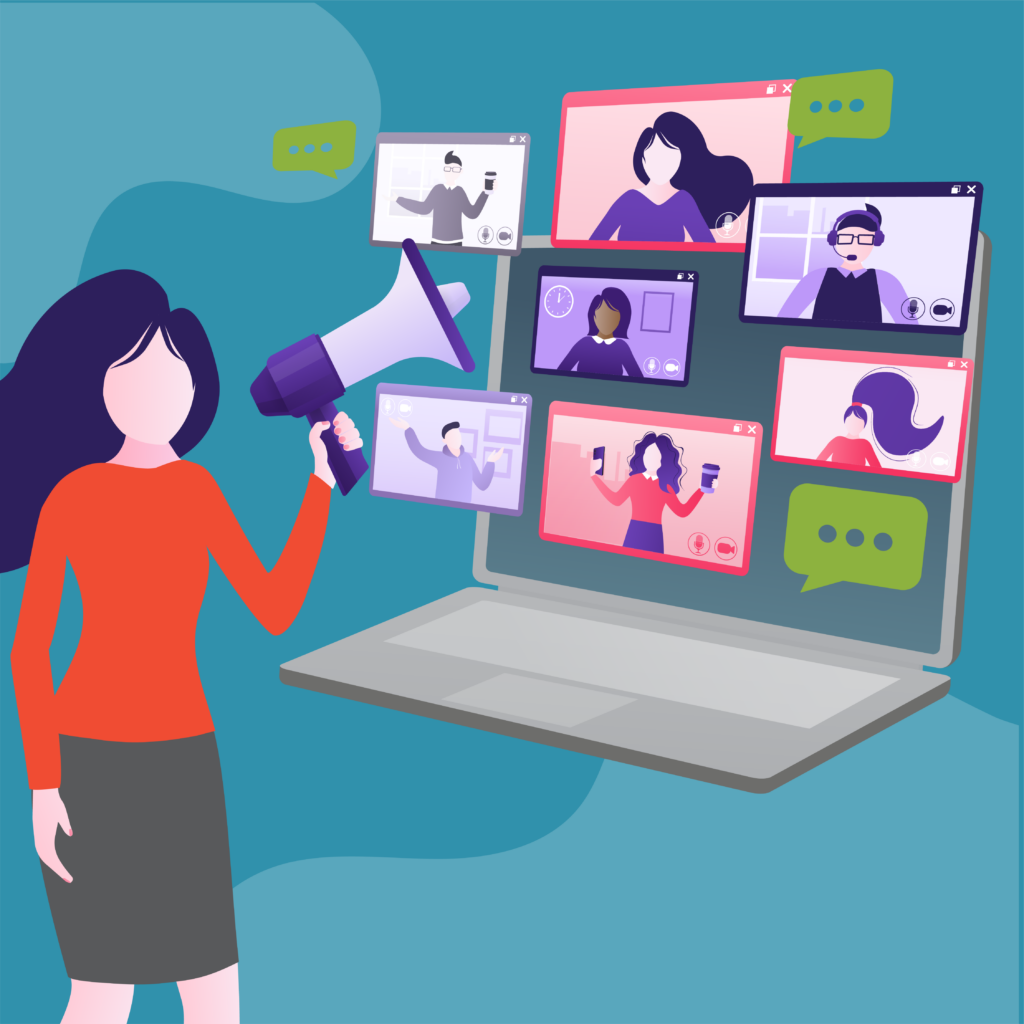For fifteen years, Think Up’s Ovations Architect, Emelyn Shabel, has used her brilliant thinking and creative flair to bring unique and memorable events to life. With a B.A. triple major degree in Speech, Theatre, and Journalism, her expertise is truly one-of-a-kind.
As our seasoned events expert, Emelyn has seen – and done! – it all. From intimate leadership retreats to multi-day conferences for thousands of attendees, and from massive in-person celebrations to engaging virtual experiences, Emelyn has the knowledge and vision to design and execute next-level events. Enter stage left: COVID-19, and many companies began transitioning their in-person events to virtual platforms. While in-person events certainly haven’t disappeared, virtual events are very much here to stay. We asked Emelyn to share her thoughts on how to execute an effective, enriching, and engaging virtual event. Keep reading to hear what our expert has to say.
Q: What have you learned since virtual events became more of the norm? Any best practices you can share?
A: First, bite-sized content is more important in a virtual event than in any other forum. Try to stick to 15-minute segments instead of hour-long segments so people don’t lose interest. Second, virtual event platforms must be tested internally to ensure they don’t conflict with company firewalls. To add to that, be sure to have IT support close by during rehearsals and the event. You never know when there might be an issue. Last, but certainly not least, presenters must rehearse. With the camera so close to the presenter’s face, it’s obvious if they’re winging it. As a presenter, it’s important to rehearse content as well as how to position yourself (i.e., body language and eye movement) to seem professional and prepared.
Q: What kind of innovation opportunities have you taken advantage of?
A: When it comes to innovation in virtual forums, it isn’t about the technology platform. It’s about the ways you use it – the way you deliver content. For example, we once used a simple polling and chat function to play a game of truth or dare. Another time, we displayed a question on the screen and people’s responses were shown in real time. These kinds of interactive activities engage the audience and make it fun. As for technological innovation, 3D backgrounds are really cool. If you have the opportunity to render one, it’s a great way to make an event feel more special.
Q: What have you found works well for the learner/attendee experience?
A: We’ve found success in creating small group interactions, either virtually or in-person, to debrief the event afterward. It’s great for people to get together to discuss what they heard and learned, and it also helps them better absorb and retain content. Since attendees are virtual, it’s really important to create a space for them to make interpersonal connections, and we’ve found that doing this after the event is most effective. We’ve also found success with structured activities and discussion guides. The virtual platform can sometimes feel awkward, and this is a great way to make attendees feel more comfortable interacting.
Q: Can you think of any other tips, tricks, or advice that you would like to share?
A: Going back to what I said about testing the virtual event platform, it’s equally important to test videos. We’ve found that videos usually don’t play well, so take the time to test during rehearsals and on the day of the event to ensure videos are not pixelated and audio works correctly. Next, don’t presume that a traditional keynote speaker can adapt to virtual delivery effectively. While a speaker may have excellent in-person delivery skills, the skills it takes to deliver virtually are very different and the speech or presentation also has to be designed differently. On a final note, two very important components of a successful virtual event are environment look and feel and attendee experience. While attendees are not in-person, it’s important to include some elements of an in-person event. Use graphics and color schemes to style the “room” and facilitate networking and discussion so attendees are engaged and make connections with each other.
Many thanks to Emelyn for taking the time to share her expertise. We are lucky to have such a talented Thinker on our team!



